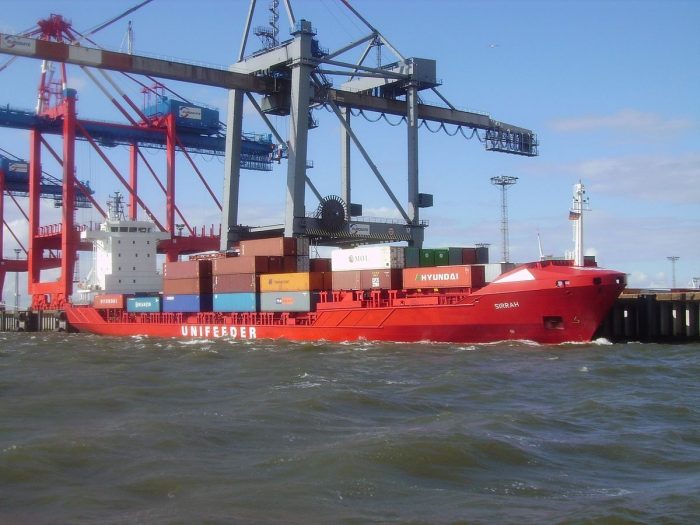
Feedership shortage forecast for 2020
7 May, 2018A new study by SeaIntel has found that for the containership market to retain its current balance between deepsea vessels and feeders, another 395 extra feederships would be required before the end of 2020, making a feedership shortage.
The shortage of feeders is being driven by the increase in larger ships on the mainlane trades.
“Larger vessels tend to result in a reduction of service frequency in the major trades in order to balance supply and demand,” SeaIntel said. “However, this also leads to a situation in which the networks with lower-service frequencies will continue to depend on feedering services, potentially even an increased transhipment incidence owing to the lower service frequency.”
With nearly one tenth of the current feeder fleet reaching 25 years old by 2020, and assuming that these will be scrapped, SeaIntel calculated that with the existing orderbook, the number of feeders for each deepsea vessel would fall from 7.9 to 5.4 by the end of 2020.
“If the global fleet should retain the same relative structure, we would need to see the ordering, and delivery, of an additional 1,200 feeder vessels between now and the end of 2020,” SeaIntel said.
This was likely an overestimate, however, because mid-sized vessels of 5,000 teu-11,000 teu, which currently carry feedered cargoes, would be phased out in favour of larger vessels.
While this would reduce the figure, the scrapping of end-of-life vessels would boost demand from 2020.
Moreover, the introduction of low-sulphur regulations from 2020 will likely increase fuel costs, making it hard for small, older feederships to operate competitively.
While some analysts have argued that larger ships being removed from the mainlane trades will be able to take up the slack as feeder vessels, SeaIntel argues that their usage is less than ideal.
“Frequency is as important for feeders as vessel size,” SeaIntel said. “Hence a sharp increase in feeder vessel sizes is not necessarily beneficial.”
While an extreme shortage of feederships would likely push up time charter rates to a level that would cause scrapping to be delayed and would bring larger ships in to the role, even a lesser shortfall in feeder deliveries would increase rates for feeders, SeaIntel said.
“In the absence of any additional ordering, we will very likely see an increase in the premium for feeder tonnage, and this in turn will place further pressure on the pricing strategies for the carriers where we will see the pricing spread between direct port-port pairs and transhipment products widen.”
Categorized in:New
This post was written byTL Pacífico


Comments are closed here.